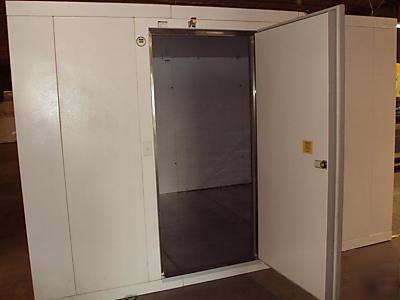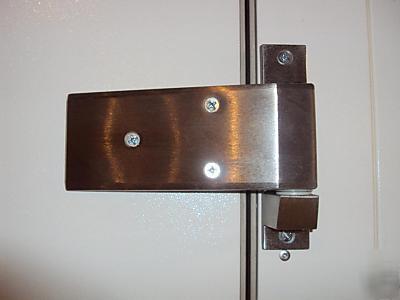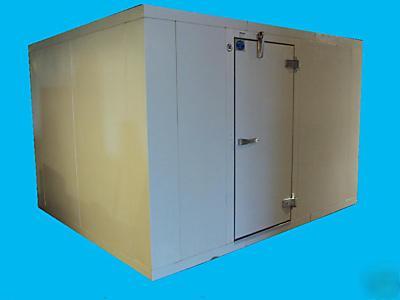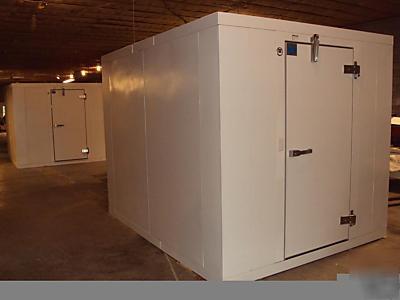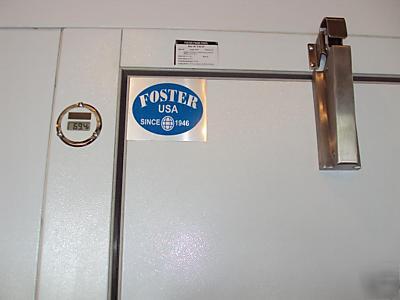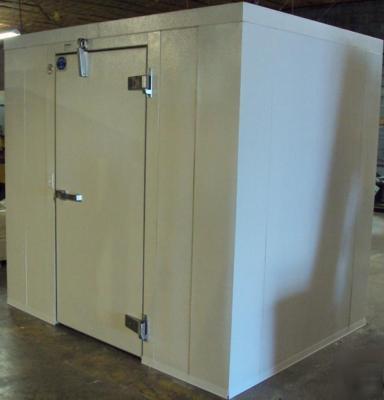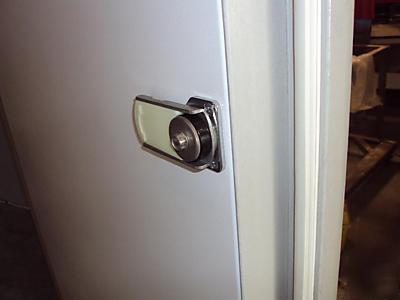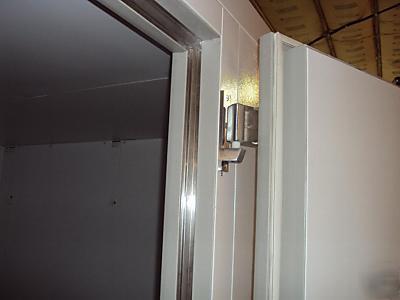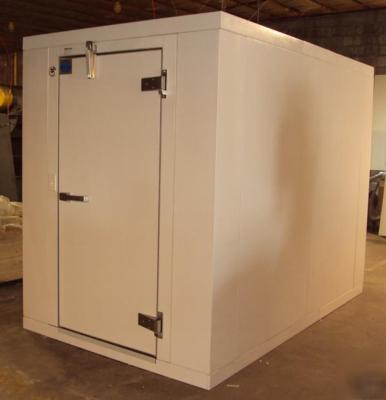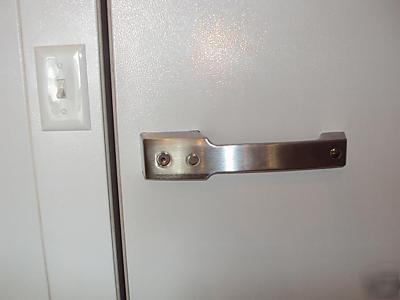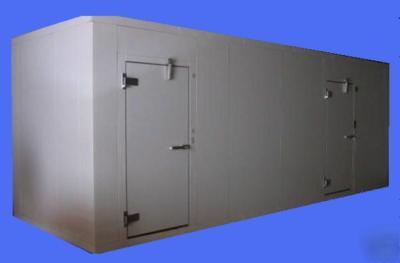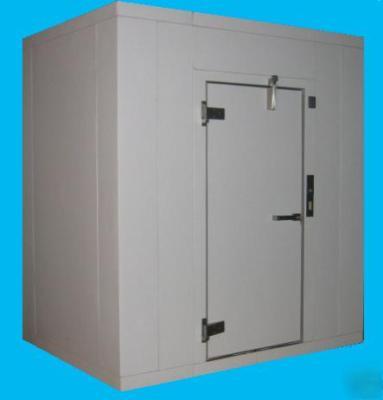____________________ > Ava
> System components
> New Style
> Tools
> Power tools
> 6'X12'X7'6NEW foster walk in freezer with refrigeration
6'X12'X7'6NEW foster walk in freezer with refrigeration
For more information, or to view an installation video, visit us at: .
From pizzerias to the White House ...
Foster USA is operating independently from regional companies in all other countries. Contact Foster companies at following numbers in different countries.
UK: 44(0)1553780500; France: 33134302222; Germany: 49781990784-0; Norway: 004767109800; Spain: 34(943)463222; Sweden: 46(0)858450920; Austria: 49781990784-0; Belgium: 3216606040; Portugal: 34(943)463222; South Africa: 27836752023; Denmark: 45(4)905012; Holland: 31348462626; and Switzerland: 49781990784.
Thirteen reasons why Foster walk-ins are superior to any other:
2 - Five years warranty on compressor and ten years on panels: Foster walk-in coolers and freezers come with a five-year warranty on compressors and a ten-year warranty on all panels. There is a standard one year warranty on all other refrigeration components.
6 - Fiberglass instead of plastic: Most companies are using metal and plastic in the manufacturing of doors and frames (door jambs and plugs), whereas Foster is using metal and fiberglass, which is most hi-tec thermal breaker in the industry. Fiberglass reduces the thermal conductivity to the best level. Additionally, the strength of fiberglass is 5 times more than that of plastic.
12- Aluminum floors without plywood support: Most of the manufacturers are pasting very thin Aluminum on plywood to make their floors which eventually deteriorate. Whereas Foster is using 12 gauge Aluminum in floors which is strong enough to take all kind of load without any support.
FACTORY DIRECT PRICES FOR 7'+ HIGH WALK-IN COOLERS & FREEZERS (WITH REFRIGERATION)
Structure Size Nominal O.D. Dimension
Structure Size Actual O.D. Dimension
Walk in cooler without floor 7'2" high
Nominal area Sq.Ft. without floor
Walk in cooler with Aluminum floor 7'6" High
Nominal Area Sq.Ft. with floor.
Walk in Freezer with Aluminum Floor 7'6" high
Architectural Specifications
Wall, ceiling and floor panels are 2' & 4' in width and are interchangeable with like panels. Corner panels are 90 Angles with 1' exterior horizontal measurement. Height of a walk-in cooler with 4' floor or screed is 7'6" and without floor or screed is 6'9". Panels are made of foamed-in-place polyurethane insulation, sandwiched between interior and exterior metal skins which is die formed and gauged for uniformity in size. All panels are built to NSF specifications.
Floors are designed to readily withstand a uniformly distributed load of 700 lb per sq ft. In case no floor is required, then a 4" high vinyl screed is provided. The screed is coved on both sides and sits flat on the floor. Screeds are nailed or screwed to the floor through the center during assembling.
120 Micron Polyester painted steel sheets:
Foster Refrigerators is the only company in the USA that is using 120-micron polyester paint on galvanized steel sheets.120-micron polyester powder paint is electro-statically applied on 24-gauge sheets and then baked at 40oF. This process is to make sure that Foster panels have a life10 times longer than those of any other manufacturer in the USA. This process also gives an elegant texture to the walk-in cooler
Permanent Plastic Locking Devices:
Locking devices consist of plastic cam locks that are foamed in place and are attached to the interior skins of the panels. These locking devices are not floating in urethane, unlike those found in the rest of the industry, but are permanently fixed to the skin. Cam locks can be moved by a hex wrench, which is provided by Foster. Access holes for locking devices are on the interior sides of the panels to allow easy assembly of the walk-in coolers from the inside. Access holes for locking devices are covered by snap caps.
To keep the cooler airtight and dust proof, PVC gaskets are foamed in place to the male sides of the panels, on both the interior and the exterior.
The door is has a posi-steel door closure and latch. Two strap-type cam-lift hinges are provided. The doorjamb is made of fiberglass. An isolated, low wattage heater strip covered by magnetic stainless steel is fitted onto the jamb in freezers. This strip proves to be the perfect sealing of the magnetic gas kit and prevent frost and condensation build-up. Concealed wiring is standard on each entrance door. A threshold with non-skid striping is provided with each door section. The heater wire continues beneath the threshold in the freezer. A digital thermometer is included in each door section to indicate the inside temperature.
A tri-action air vent is provided to equalize pressure between the interior and exterior, caused by sudden temperature changes due to door openings and evaporator defrosting. The vent is heated to prevent moisture and frost accumulation (in case of freezers only).
Polyurethane instead of Polystyrene(styrofoam)
Polyurethane Vs. EPS (Expanded Polystyrene)
Polyurethane is a relatively new product, roughly around 35 years. EPS has been with us for around 50 years. Polyurethane was produced to replace the shortfalls of expanded polystyrene. Below you will see a detailed difference between polyurethane, and expanded polystyrene.
R- Value - Polyurethane is the highest rated insulation in the world. You will find it in most all of your refrigerators, freezers, and even in your personal carry about coolers. Per inch of insulation it has no equal. The walk in coolers and freezers for use thought the country are made of polyurethane. EPS has a value of R-2 to R-5 per inch. Polyurethane has an R-Value OF R-7 to R-8 per inch.
MANUFACTURING - Probably the biggest difference between Polyurethane and EPS is in the manufacturing of these panels. Both products use OSB for covering both sides of their foam, but here is where the similarity ends. In the bonding of the foam the actual polyurethane is used as bonding agent to the OSB itself. Polyurethane is one of the best glues used in the industry today. Some manufactures of OSB and plywood use polyurethane to bond their products together. When it comes to adhering, the use of polyurethane gives us both an excellent R- value and the strongest bond in the industry. EPS panels use glue spread on both sides of the OSB, and then the OSB is matched together with the EPS, and mechanically held in place and under pressure until the glue is dried.
Moisture Resistance - With all the problems of mold and mildew, moisture resistance is today a very important factor. Polyurethane has one of the lowest moisture Permeability ratings of any product manufactured for the building industry today. The permeance rating on polyurethane is 1.2. The permeance rating on EPS is 2.0 to 5.0
This difference in a high humidity area would warrant another moisture barrier for EPS panels. In calculating R-values, some EPS manufactures use these additional moisture barriers in there calculations.
Fire Resistance - The polyurethane is a UL Class 1 rated foam. This means that polyurethane is not a source for fire. On it's own, polyurethane will not burn. When left on it's own, it will extinguish it self. A Class 1 rating is the highest rating a building product can obtain. Also, polyurethane is a thermal-set plastic. This means, that it will not melt. Polyurethane is not affected until temperatures reach 1000 degrees and at that time it will only char. EPS on the other hand is not a thermal-set plastic and will begin to soften at temperatures of 180 degrees, and melt at temperatures of 240 degrees. Polyurethane has a distinct advantage.
DENSITY - The density of a product will determine the strength of it. EPS has a density of 1 lb. The polyurethane has a density of 2.2lb.
CHEMICAL RESISTANCE - Polyurethane is resistant to most counter chemicals. EPS react violently to petroleum based products. PL 400 and liquid nail will literally burn thru EPS.
From our experience, we feel that the investment made equals the quality of product made.
